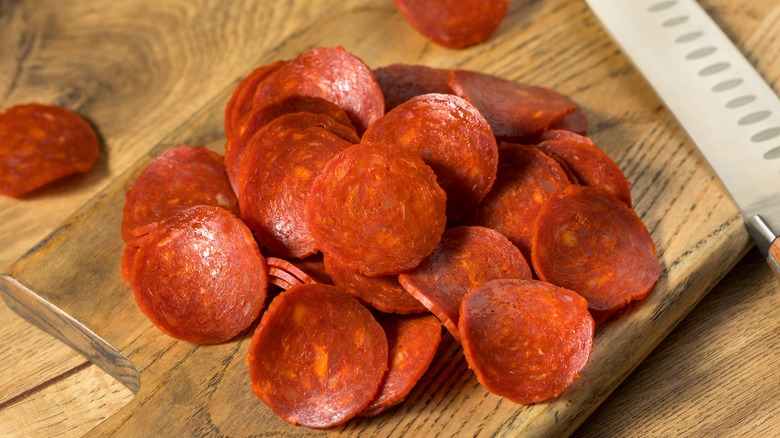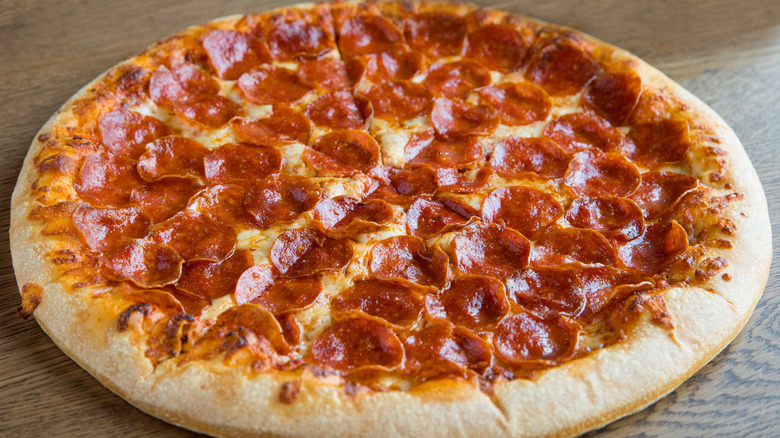The Real Reason Some Pepperoni Curls When Cooked
If you're a fan of pizza (really, who isn't?), you know that not all pizza is created equally, and much of the differentiation stems from the ingredients used. You don't want just any old sauce and cheese and toppings on your pie — you want to be sure it's made with quality ingredients because it does make a huge difference. For all the pepperoni fans out there, you know there's a difference between pepperoni that curls and that which lays flat on the pizza, but why is it that some of them curl and crisp so nicely and others don't?
Serious Eats tested out some theories and came up with a few different reasons as to why some pepperonis may curl while others may not. The hypotheses and testing methods were lengthy and well-documented, with photos and explanatory background information on the different types of pepperoni used, so it seems like a pretty legitimate experiment to us.
Casing and thickness play a big part
After many rounds of testing out several different theories regarding all sorts of different factors, Serious Eats came to the conclusion that there are a few different elements at play when discussing whether or not pepperoni will curl when cooked on pizza. The first of these deals with the casing used on the pepperoni. The way the meat is stuffed into the casing affects whether or not it will curl, says the article, so look for natural or collagen casing for the curliest slices.
The second variable was the variance of heat on the pepperoni caused by uneven cooking (basically how the edges are less protected from heat than the bottom of the meat slices). Serious Eats recommends seeking out slices of pepperoni that are between 2.5 and 5.6 millimeters thick for optimum curl. The third factor was the moisture retention ability of the center versus the edges of the pepperoni, which relates back to the heat variance.
The conclusion: If you want pepperoni that curls, look for a medium thickness and natural casing.

